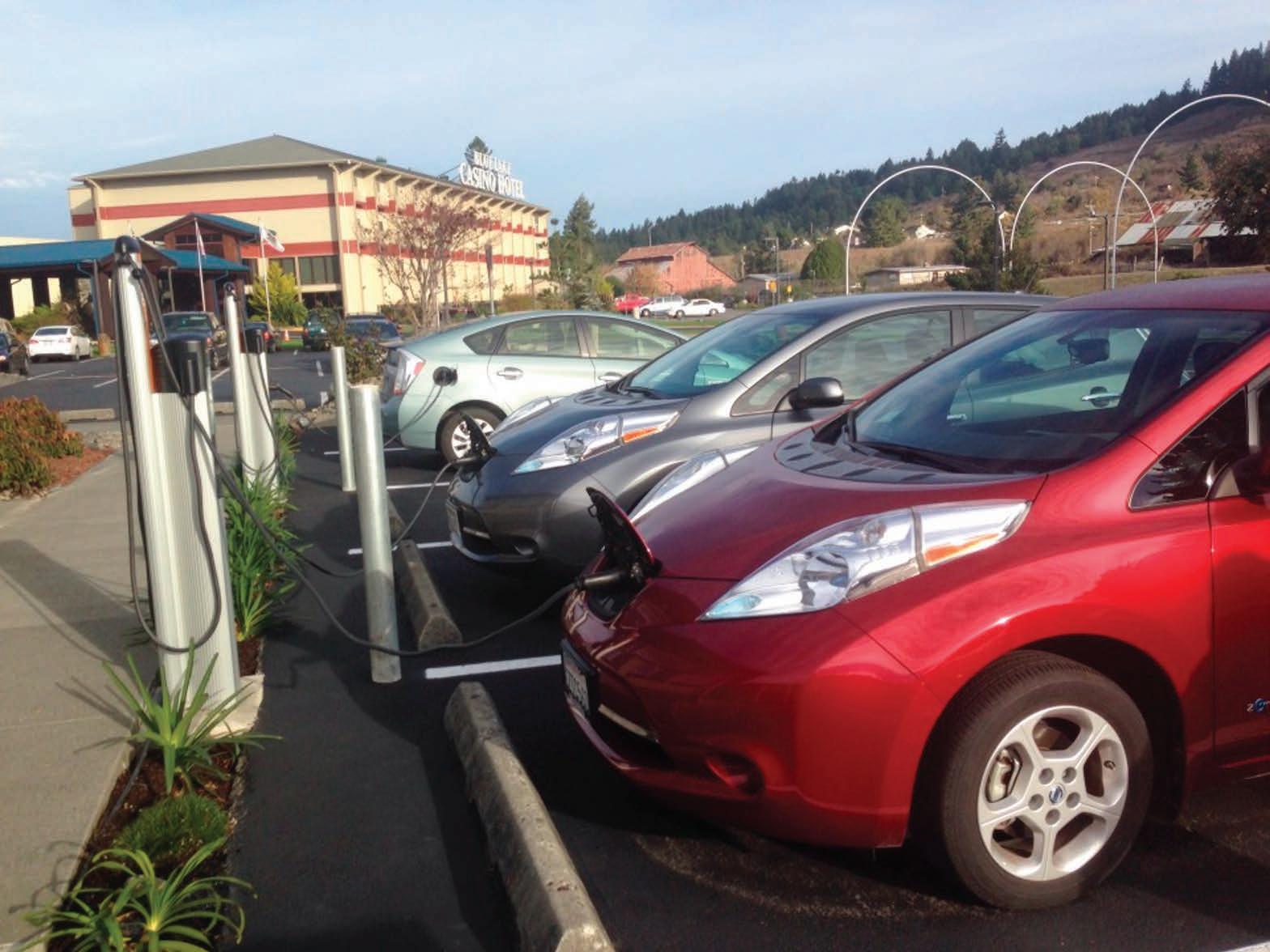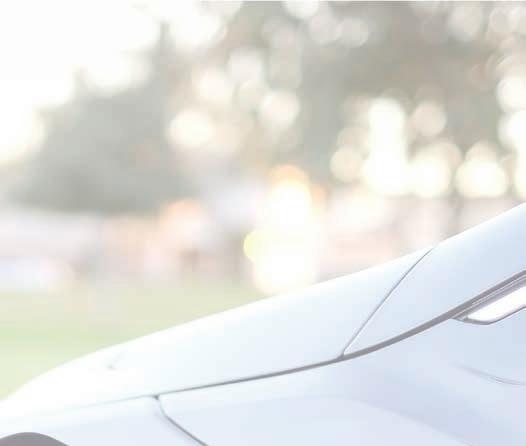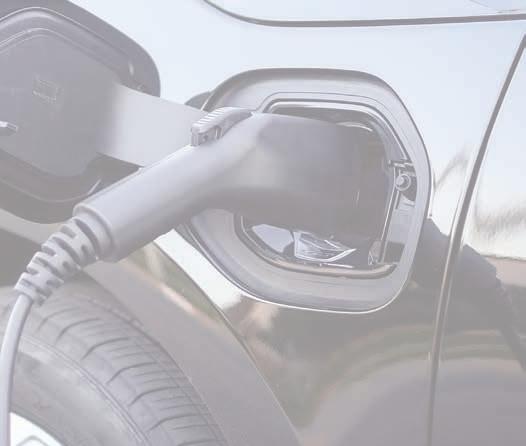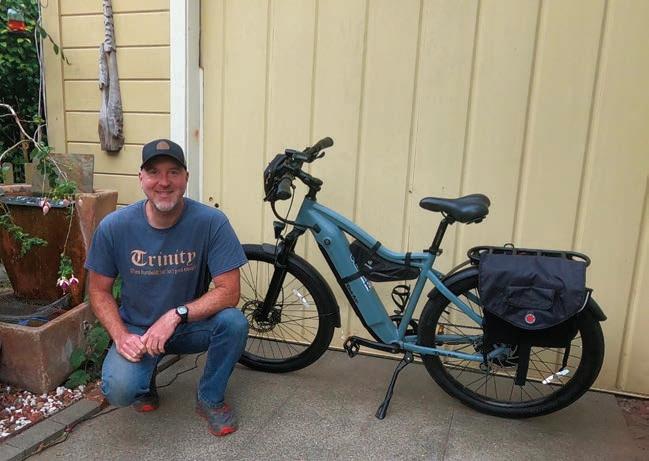
8 minute read
Advanced Transportation
Advanced Fuels and Transportation

Advertisement
“2020 proved to be a wild ride for transportation, as it was for everyone. In 2019
our Board adopted Low-Carbon
Transportation as a strategic goal, with a focus on supporting efforts to reduce vehicle miles traveled, increase advanced fuel vehicle adoption and fuel efficiency, and expand fueling infrastructure. We continue working on these efforts, but the pandemic brings some ongoing realities: people drive less, social distancing is tough on public transit, electric vehicle (EV) sales are sluggish, and the economy is uncertain. The good news is that our transportation initiatives are still relevant. The slowdown provided an opportunity to upgrade our existing EV charging sites with new equipment, with all stations now refreshed as of January 2021, using California state CALeVIP funds. The same funds are also helping to pay for some expansion: the Blue Lake Rancheria just activated four more Level 2 ports in late 2020 and we’re currently working to build out four ports at 3rd and H Streets in Eureka, and eight ports at the Arcata Community Center. These last two projects are still being designed and we hope to activate the stations in summer 2021. We also just rolled out a local rebate for new EVs in December of last year, and one for residential EV chargers will be coming out in the months ahead.
The Redwood Coast Energy Authority also sees rapid growth for diverse small-scale transportation. Design innovations in electric motors bring new capabilities such as longer range and increased carrying capacity to smaller devices such as bicycles and scooters. In Spring 2020 RCEA ran a highly successful electric bicycle (e-bike) rebate program, and we hope to renew this program when funds allow. The timing was ideal to help people get outside to do essential errands and get some exercise in the fresh air. Electric scooters are also on the rise but based on what we’ve seen in other regions, we’ll wait until traffic codes get addressed before promoting e-scooters. In the next few years, we expect this market sector to surge as people discover the freedom and flexibility of e-mobility devices, and we will do our part to help provide choices beyond a single-occupant four-wheeled vehicle.
Looking down the road for electric vehicles, new opportunities exist for a major personal expense that is parked most of the time. One of the most exciting is “vehicle-to-home” (V2H), which lets us temporarily power homes and small businesses with EVs during blackouts. On other days, we can use “vehicle-to-grid” (VTG) to charge EVs when there is surplus electricity and sell it back to the grid when demand is high. This helps to balance electricity supply and demand and provides another tool to complement intermittent renewable energy. On the not-so-distant horizon, autonomous vehicles may dramatically redefine much of our paved environment. With car-sharing services or self-driving vehicles “on demand,” people can choose to reduce or eliminate car ownership, with its associated cost and complexity. With fewer cars around, communities can repurpose land dedicated to roads and parking, and make room for other forms of travel such as biking and walking. There will be profound community benefits as well, such as Hosted by
24/7 CUSTOMER SERVICE HOTLINE
increased independence of older 3 WAYS to initiate a charge:
1 Membership Card 2 Credit Card - call 1-855-758-4389
drivers after they give up driving.” 3 Mobile App Charging will start when plugged Handle will release once payment is authorized.
into car.
Move your vehicle afterwards so others can use the charger.
Dana Boudreau
Director, Transportation and Operations
Share the road
RCEA’s charging stations have recently been upgraded and will soon sport a new look


There are a wide variety of electric bikes on the market and they all offer easier commutes and extended riding range than a conventional bicycle. They can also offer a more accessible ride for people with physical limitations. Accelerate the adoption of electric vehicles, with a target of over 6,000 electric vehicles on the road in Humboldt County by 2025 and 22,000 vehicles by 2030. Develop public, workplace, and residential electric vehicle charging infrastructure necessary to support these county-wide electric vehicle targets. Work with other local public entities to reduce vehicle miles traveled in Humboldt County by at least 25% by 2030. By 2030 reduce greenhouse gas emission from transportation by over 65% through reductions in vehicle miles traveled, improved vehicle efficiency, the adoption of electric vehicles, and, where determined to be an effective emissions-reduction strategy, the use of biofuels as a bridge to a full transition to zero-emissions vehicles. Maintain a trajectory of emissions reduction to eliminate the use of fossil fuels by 2050.

Number of EVs in Humboldt County
EV Registrations Plug-in hybrid (PHEV) Battery electric (BEV)
0 2010 2011 2012 2013 2014 2015 2016 2017 2018 2019 2020 2021
2020 annual vehicle registration data from the State of CA will be available in April 2021
Electric Vehicle Sales in Humboldt
Humboldt County residents continue to embrace new ideas, and despite being a remote region with a modest economy, Humboldt keeps up with many other California communities in EV sales. From 2011 through February 2020, Humboldt residents received 558 rebates totaling $1,149,450 to help purchase new plug-in and battery-only EVs. The rebates cover both plug-in hybrids (PHEV) and battery EVs (BEV). In the last eight years about 60% of local rebates were for PHEVs, and the remainder went to BEVs, a few electric motorcycles and a hydrogen vehicle. As EV range continues to increase we expect this trend to shift toward BEVs with their simpler mechanics and reduced maintenance. One limit of current state rebate data is that it only counts EVs purchased by people who apply and qualify for a rebate. Used vehicles are often preferred for a rural budget, and to count these EVs, we obtain data from the California Department of Motor Vehicles to show us the cumulative registered EVs in Humboldt.

Which EVs are Locals Buying?
Vehicle makes purchased through 2019
A new Chevy Bolt gets an estimated 259 miles on a full charge, and goes from 0-60 MPH in 6.5 seconds.
Electric Vehicle Rebate
What are the Benefits of Electric Vehicles?
Join us February 10th at 3 p.m. on our Facebook page for a live Q&A about the rebate.

Electric vehicles are high-performance and fun to drive, but they can also significantly reduce the greenhouse gas emissions that contribute to climate change. They require less maintenance, they can save you money, and by charging at your home, work, or on the road, refueling is flexible and convenient. Plus, electricity can be produced locally – you can even generate your own fuel with solar panels on your home -- so EVs can be a key tool for energy independence and reducing our reliance on petroleum imports. The Redwood Coast Energy Authority (RCEA) is offering a local electric vehicle rebate, funded by The Redwood Coast Energy Authority (RCEA) is offering a local electric vehicle rebate, funded by RCEA’s Community Choice Energy program, to make purchasing a new EV even more affordable.


This rebate adds an additional rebate to the state of California’s Clean Vehicle Rebate Program (CVRP). RCEA customers are eligible for 50% of whatever incentive amount they received from the CVRP. Applicants can only apply for RCEA’s rebate if they have already been approved for the CVRP. Check www.CleanVehicleRebate.org for your CVRP eligibility. This is a limited-time offer. Applications will be accepted on a first-come, first-served basis. We will accept CVRP approvals dated 9/1/20 or later. Vehicles must be registered in Humboldt County.


The Humboldt Electric Vehicle Association is another example of our community’s innovative drive. Roger, to the left, is one of the founders.
Application and details available
on our website at www.RedwoodEnergy.org or by contacting us at (707) 269-1700 or EV@RedwoodEnergy.org

The goal of RCEA’s Transportation Program is to support the use of low-carbon fuel vehicles in Humboldt County.

E-Bike Rebate

In the spring of 2020, RCEA offered a rebate for up to 50% off a new electric bicycle, an “e-bike.” Community response was enthusiastic and all the rebates were reserved in less than a month. COVID-19 slowed down delivery dates for a variety of models, but we issued our last rebate check in mid-August. E-bikes are now visibly showing up on roads and paths around the county, and RCEA is pleased to help people get around without a car.

Funding is expected to be lean for now, but we hope to offer this rebate again. We’re also evaluating e-scooters, but are waiting for jurisdictions to formalize how they are allowed on our roads.
“I truly appreciate being able to get the rebate from RCEA - it totally motivated me to get the e-bike, saving fuel and building muscle at the same time.” - Terry Uyeki
“I've been surprised to find that I like the e-bike even more than I expected. It's fantastic for running errands around town, going up hills with loads of groceries. I'm looking forward to the completion of the Eureka-Arcata trail so I can safely commute to work.” -Matt Lang





